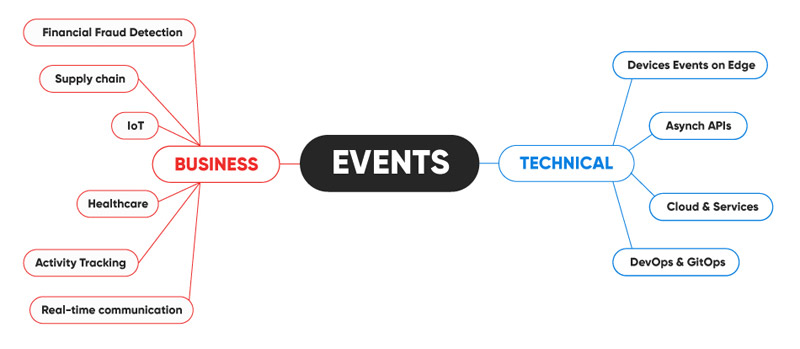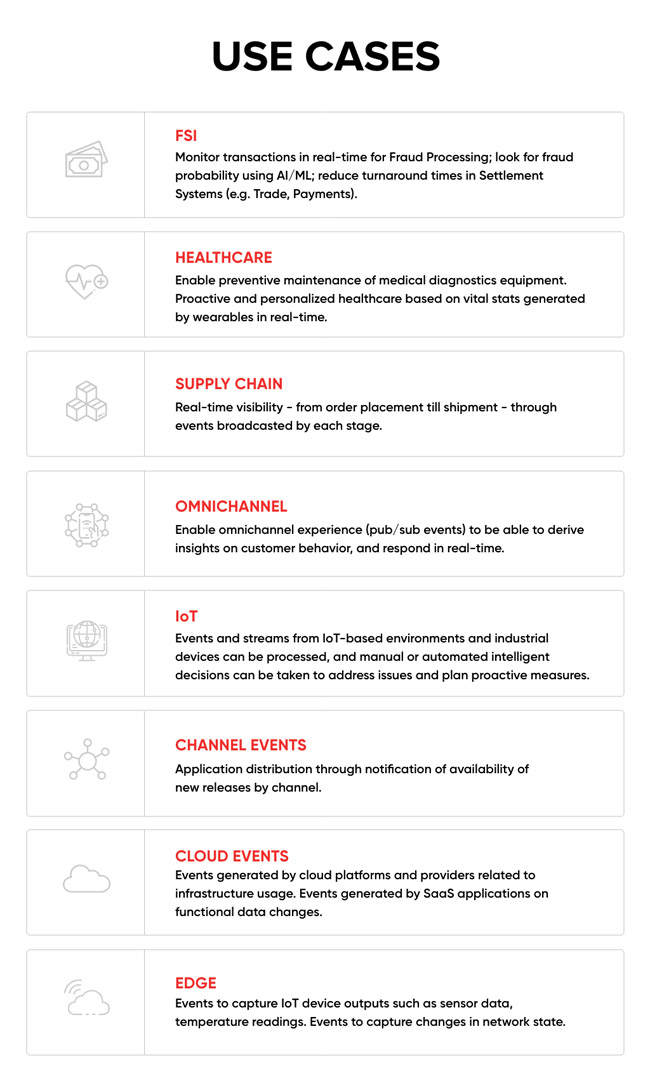
Adoption to Event-Driven Architecture (EDA) is emerging
December 9, 2020
Enterprises rely heavily on technology to build scalable, agile and highly available businesses. Event-Driven Architecture is emerging as a key cornerstone enabling modern enterprises to operate in real-time, adapt to changes quickly, and make intelligent business decisions.
“Event-driven architecture (EDA) is a design paradigm in which a software component executes in response to receiving one or more event notifications.”– Gartner
Combining agile methodologies with a platform that can respond rapidly to real-time events empowers businesses to make manual or automated intelligent decisions and achieve true enterprise agility. Events from a variety of sources from Servers to Wearables can then be harnessed to support a number of industrial use cases.
Large organizations that adopt such architectures need to treat Events as first-class citizens of their Platform, along with their APIs and Business Services.
Event-Driven Architecture Adoption Patterns
- Enterprises that embrace event-driven architecture can capitalize on the benefits of scalable and reliable real-time communication. This can help drive many strategic initiatives across IoT, eCommerce, Data Integration across systems, data and applications, Edge and Financial Fraud Detection, among others.
- Companies that add event-driven architecture to their systems and applications can improve the scalability and responsiveness of applications. They can also access the data and context needed for better business decisions, be that stream processing, data integrations or website activity tracking.
Events are captured as they occur from a spectrum of event sources. On a high-level, these events are categorized into Business/Functional or Technical.


True Stories of EDA Driving Business Value
1. Create a new business model through new channels
Emirates NBD uses Red Hat Fuse and Apache Kafka on Red Hat OpenShift to support real-time banking and partner interactions.
2. Incredible improvement in customer experience
A global Financial Services leader implements a real-time campaign solution that delivered a ~60% increase in campaign conversion rates.
3. Measurable and Effective Operational improvement
A global logistics provider uses an events fabric to provide real-time visibility to shipments across its wide global network.
4. In the field of IoT
A global electronic devices manufacturer used proactive event-based monitoring to reduce the number of service maintenance calls by 45%. Event streaming analytics helped to recognize patterns and prioritize responses to alerts.
5. EDA for Inter-microservices communication
A European bank used an event-driven architecture to improve its relationship with customers. A lightweight event bus-based solution helped keep applications in sync and provided a single view of customer data that enabled in streamlining the customer experience.
Source: www.wiprodigital.com/2020/11/10/a-guide-to-enterprise-event-driven-architecture/


















